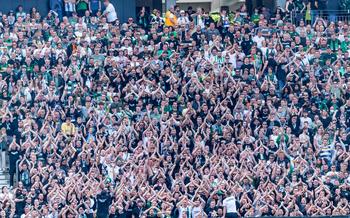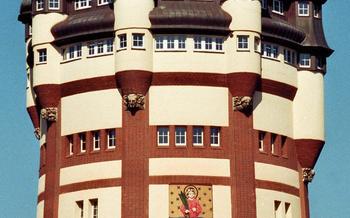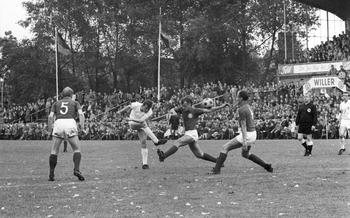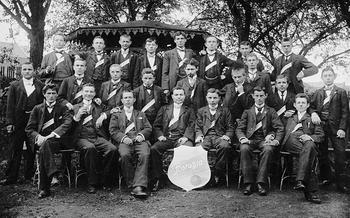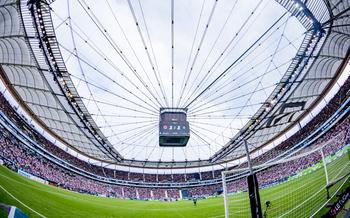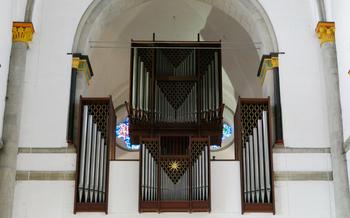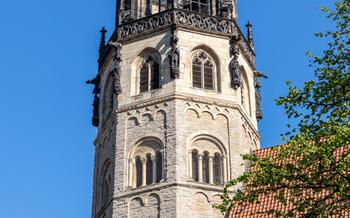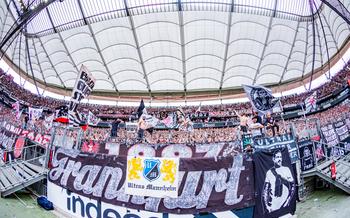
Andreaskirche
- Historical Significance
- Architectural Marvel
- Interior Highlights
- Religious Significance
- Cultural Events
- Guided Tours
- Accessibility
- Surrounding Area
- Photography and Videography
- Dress Code and Etiquette: Respecting the Sacred Space
- Local Cuisine
- Accommodation
- Transportation
Historical Significance
The Andreaskirche in Mönchengladbach, Germany, holds a rich and captivating history that dates back to the 11th century. Initially constructed as a modest wooden chapel, it was later rebuilt in stone during the 12th and 13th centuries, reflecting the growing importance of the city and its religious significance. Over the centuries, the church underwent several expansions and modifications, resulting in a harmonious blend of architectural styles that tell the story of its evolution.
Today, the Andreaskirche stands as a testament to Mönchengladbach's religious and cultural heritage. It has survived numerous challenges, including fires, wars, and natural disasters, emerging as a symbol of resilience and faith. Its status as a protected monument underscores its exceptional value and ensures its preservation for generations to come.
Architectural Marvel
The Andreaskirche stands as a testament to the architectural brilliance of the Gothic period. Its exterior boasts intricate carvings, pointed arches, and flying buttresses, creating a harmonious blend of strength and elegance. The church's three naves, separated by rows of slender columns, lead the eye towards the stunning high altar. The ribbed vaults, soaring overhead, add a sense of grandeur to the interior space.
Remarkable stained glass windows adorn the walls of the Andreaskirche, casting a kaleidoscope of colors onto the stone floors. These windows depict biblical scenes and figures, adding a vibrant and spiritual dimension to the church's interior. The intricate details and craftsmanship of the windows are a testament to the skill and artistry of the medieval artisans who created them.
Throughout the church, visitors can admire a wealth of sculptures, altars, and other decorative elements. The high altar, a masterpiece of Gothic art, is adorned with intricate carvings and gold leaf, depicting scenes from the life of Jesus Christ. The sculptures and reliefs that adorn the walls and pillars add to the church's rich visual narrative, bringing the stories of the Bible to life.
The Andreaskirche's architectural marvel lies in its harmonious blend of structural elements and decorative details. Its Gothic features, combined with the artistic treasures within, create a breathtaking and awe-inspiring space that invites contemplation and spiritual reflection.
Interior Highlights
The interior of the Andreaskirche is a testament to its rich artistic heritage. The magnificent high altar, crafted from intricately carved wood and adorned with gold leaf, stands as the centerpiece of the church. Its elaborate design and attention to detail are a true testament to the skill and artistry of its creators.
Another notable feature is the impressive organ, renowned for its exceptional acoustics and musical performances. The organ's melodious sounds fill the church with a sense of awe and wonder, creating a truly immersive experience for visitors.
The Andreaskirche also houses a collection of historical artifacts, paintings, and sculptures that add to its cultural significance. These works of art depict biblical scenes, religious figures, and historical events, providing a glimpse into the church's past and its connection to the community.
Exploring the interior of the Andreaskirche is like stepping into a sacred realm, where art and spirituality converge. The stunning beauty and historical significance of its interior make it a must-visit for anyone interested in architecture, art, or religious history.
Religious Significance
The Andreaskirche holds immense religious significance as a center of worship and pilgrimage. Dedicated to Saint Andrew, the patron saint of the city, the church has played a pivotal role in shaping the religious identity of the region. Saint Andrew, known as the first-called apostle, is revered for his unwavering faith and missionary zeal. His association with Mönchengladbach dates back to the 9th century when his relics were believed to have been brought to the city. The church's dedication to Saint Andrew reflects the deep devotion and spiritual connection that the local community feels towards him. Throughout history, the Andreaskirche has been a place of pilgrimage for those seeking spiritual guidance, healing, and blessings. Special religious events, festivals, and traditions associated with Saint Andrew are celebrated with great fervor, attracting pilgrims and visitors from near and far. The church continues to be a vibrant center of Catholic faith, fostering a sense of community and spiritual renewal among its parishioners and visitors.
Cultural Events
The Andreaskirche is not just a place of worship but also a vibrant cultural hub that hosts a variety of events throughout the year. The annual "Andreaskirmes," a traditional fair, is a major highlight, attracting visitors from near and far. With its colorful stalls, rides, and entertainment, the fair offers a festive atmosphere and a chance to experience local traditions. The church also collaborates with local artists, musicians, and performers to organize concerts, exhibitions, and other cultural programs. These events provide a platform for local talent and add to the vibrant cultural scene of Mönchengladbach. Whether it's classical music concerts, art exhibitions, or theatrical performances, the Andreaskirche offers a diverse range of cultural experiences that cater to different tastes and interests. Visitors are encouraged to check the church's calendar to plan their visit around these special events and immerse themselves in the cultural offerings of Mönchengladbach.
Guided Tours
To delve deeper into the rich history, architecture, and religious significance of the Andreaskirche, guided tours are available to enhance your visit. Knowledgeable and experienced tour guides lead these informative tours, providing insights and anecdotes that bring the church's story to life.
Different types of tours are offered to cater to diverse interests. General tours provide a comprehensive overview of the church's history, architecture, and religious significance. Thematic tours focus on specific aspects, such as the church's art and sculptures or its role in the Reformation. Special tours are designed for groups with specific interests or needs, such as school groups or visitors with disabilities.
The expertise of the tour guides is a highlight of these tours. They are passionate about the Andreaskirche and share their knowledge and enthusiasm with visitors, making the experience both educational and enjoyable. Visitors are encouraged to ask questions and engage in discussions, creating a dynamic and interactive experience.
To ensure availability and avoid disappointment, it is advisable to book tours in advance. This can be done through the Andreaskirche's website or by contacting the church office directly. Whether you are a history buff, an architecture enthusiast, or simply seeking a deeper connection with the church, a guided tour of the Andreaskirche is an unforgettable experience that will leave you inspired and enriched.
Accessibility
The Andreaskirche welcomes visitors with disabilities and strives to provide an accessible and inclusive experience for all. Accessible entrances, ramps, and elevators ensure that visitors can navigate the church's interior with ease. Upon request, wheelchairs and hearing aids are available to enhance accessibility for those in need. The church's commitment to inclusivity extends to providing information in various formats and offering assistance to ensure a comfortable and meaningful visit for every individual.
Surrounding Area
Beyond the walls of the Andreaskirche, the surrounding area beckons with a captivating blend of history and charm. The picturesque Markt Square, just steps away from the church, transports visitors back in time with its cobblestone streets, historic buildings, and inviting cafes. Here, one can savor a cup of coffee while admiring the intricate facades that adorn the square, each telling a tale of Mönchengladbach's rich past.
A short stroll leads to the Abteiberg Museum, housed in a former Benedictine monastery. This cultural gem showcases an impressive collection of modern and contemporary art, including works by renowned artists such as Gerhard Richter and Yves Tanguy. The museum's striking architecture, blending Gothic and modern elements, mirrors the city's own journey through time.
For a glimpse into Mönchengladbach's aristocratic heritage, a visit to Rheydt Castle is a must. Located just a few kilometers from the Andreaskirche, this moated castle has stood proudly for over 700 years, witnessing the rise and fall of dynasties. Its well-preserved interiors offer a fascinating glimpse into the lives of the noble families who once called it home.
Venturing beyond these landmarks, the charming streets and alleys surrounding the Andreaskirche reveal hidden gems and local treasures. Quaint shops, cozy restaurants, and independent galleries line the narrow lanes, inviting visitors to explore and discover the unique character of this vibrant city.
Photography and Videography
When visiting the Andreaskirche, photography and videography are permitted with respect to the sacred nature of the space. Before capturing any images or footage, it is essential to obtain permission from the church authorities, especially during religious services or events. The church's interior offers numerous captivating spots for capturing stunning visuals. The intricate details of the Gothic architecture, the vibrant stained glass windows, and the ornate altars provide ample opportunities for photographers and videographers to showcase the church's beauty. Visitors are encouraged to share their captured moments responsibly, allowing others to experience the splendor of the Andreaskirche virtually. By adhering to these guidelines, visitors can contribute to preserving and promoting the church's rich heritage while respecting its religious significance.
Dress Code and Etiquette: Respecting the Sacred Space
When visiting the Andreaskirche, it is important to observe appropriate dress code and etiquette, showing respect for the religious significance of the site. Modest attire that covers shoulders and knees is recommended, avoiding revealing or casual clothing. This demonstrates respect for the sacred nature of the space and the religious community that worships there.
While inside the church, maintaining silence and reverence is essential, especially during religious services. Visitors should be mindful of their behavior and actions, avoiding distractions or disruptions that may disturb the worshippers. Photography and videography are generally permitted with permission, but it is important to be discreet and respectful, avoiding the use of flash or tripods that may interfere with ongoing services or ceremonies.
By following these guidelines, visitors can contribute to the peaceful and harmonious atmosphere of the Andreaskirche, allowing everyone to experience the beauty and spirituality of this sacred space.
Local Cuisine
Mönchengladbach offers a delectable culinary journey, tantalizing the taste buds with a diverse range of local dishes and specialties. Indulge in the hearty flavors of traditional German fare, such as the mouthwatering "Rheinischer Sauerbraten," a marinated beef roast that has become a regional favorite. Sample the crispy goodness of "Mönchengladbacher Reibekuchen," a traditional potato pancake that embodies the city's culinary heritage.
Venture into the charming local restaurants, cafes, and bakeries nestled near the Andreaskirche to immerse yourself in the authentic flavors of the region. Savor the aroma of freshly baked pastries, the richness of homemade soups and stews, and the delectable cakes that showcase the city's sweet side.
For a more casual dining experience, explore the vibrant food markets and street food options that dot the city. Sample regional specialties like "Currywurst," a grilled sausage topped with a tangy curry sauce, or indulge in the sweet temptation of "Mönchengladbacher Waffeln," a local take on the classic Belgian waffles.
Whether you prefer a traditional sit-down meal or a quick bite on the go, Mönchengladbach's culinary scene promises a memorable dining experience that will leave you craving for more.
Accommodation
Mönchengladbach offers a range of accommodation options to suit different budgets and preferences. For a convenient stay near the Andreaskirche, consider hotels like the "Hotel am Dom" or the "Best Western Premier Parkhotel Mönchengladbach." These hotels provide comfortable rooms, modern amenities, and easy access to the church and other city attractions.
For a more immersive experience, opt for local guesthouses or vacation rentals. These accommodations often offer a glimpse into the city's culture and lifestyle, with cozy rooms, unique decor, and the chance to interact with local hosts. Check websites like Airbnb or Booking.com to find charming apartments, houses, or bed and breakfast options near the Andreaskirche.
To ensure a hassle-free stay, book your accommodation in advance, especially during peak tourist season or major events. This will guarantee availability and allow you to choose from a wider range of options.
Transportation
Mönchengladbach and the Andreaskirche are easily accessible via various transportation options. The city is well-connected by an efficient public transportation system, with buses and trams providing convenient travel within the city limits. Visitors can purchase tickets at designated vending machines or through mobile applications. For those arriving by car, Mönchengladbach is conveniently located near major highways, ensuring smooth connectivity from different parts of Germany and neighboring countries. Ample parking facilities are available near the Andreaskirche for visitors who prefer to drive. Additionally, the city is served by the Mönchengladbach Airport, which offers domestic and international flights, making it a convenient gateway for visitors from afar.
